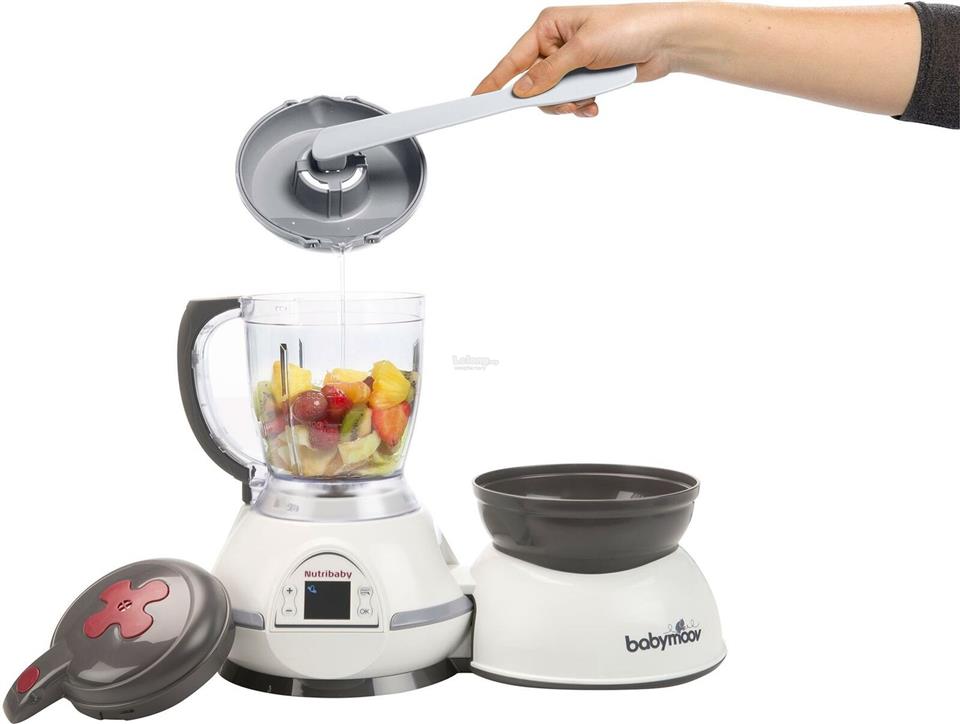2 week old baby feeding every half hour
What To Do When Baby Is Feeding Every Hour (& Not Sleeping!)
What's in this post...
Is your baby feeding every hour and not napping or sleeping well? Here’s how you can handle when your little one nurses nonstop.
First let me say, mama, that the newborn period can be rough.
You feel like you were a normal human just a few short weeks ago and now, well, you’re a walking milk producer and baby just won’t settle.
You’re exhausted, weary, and ready for your newborn to sleep.
➡️ The good news is this: with a few tweaks you can stop feeding every hour.
Here’s why your baby feeds every hour
If your baby feeds every hour, they are “snacking.”
Snacking means they are drinking enough fore milk (the less nutrient dense milk that lets down first) that they are filled up enough to doze off in mama’s arms.
Or, some babies, will stop feeding after a few minutes and just stare up at you with those Big Newborn Eyes👼.
Either case… baby is snacking instead of taking a full feed.
Read These While You’re At It
How to get your baby to stop feeding every hour
If you want your baby to take full feeds, the first thing you need to do is get them on a proper newborn breastfeeding schedule.
You aren’t going to become a slave to the clock, but you’re going to stop the snacking.
Instead of cluster feeding on purpose, right now, you’re cluster feeding by accident.
How do you do that?By only feeding baby every 2.5 to 3 hours and then, at those feeds, giving baby full feeds.
Newborns will naturally only need to feed every 2.5 to 3 hours if they’re taking full feeds each time.
If your baby has a habit of snacking, they will not be the ones to stop it, you’ll have to.
Newborn Feeding Chart
Use this simple printable chart to track your feeds to make sure baby is fed, your supply is up, and everyone is well.
Here’s how to keep baby awake during breastfeeding
When baby feeds for 5 minutes then nods off, you’ll need to swoop in and keep baby awake.
This will help baby get as much milk in as possible and will help them to take better naps.
- Rub baby’s cheek
- Rub baby’s hands or feet in circular motions
- Unswaddle baby (a must if you want to avoid day night confusion)
- Use a wipe or wet wash cloth to rub on baby during feeds
- Stop feeding and hold baby up, speaking to baby
- Take baby outside or somewhere that’s a change of scenery
- Make noise, get near siblings, talk to baby
- Keep the lights on
Read: Is Sleep Training a Baby Bad or Dangerous? Let’s Talk Facts!
The reason baby doesn’t sleep well when they feed every hour
Your little one will likely not take good daytime naps if they are not taking full feeds.
They aren’t full enough to stay drowsy and asleep as they transition sleep cycles.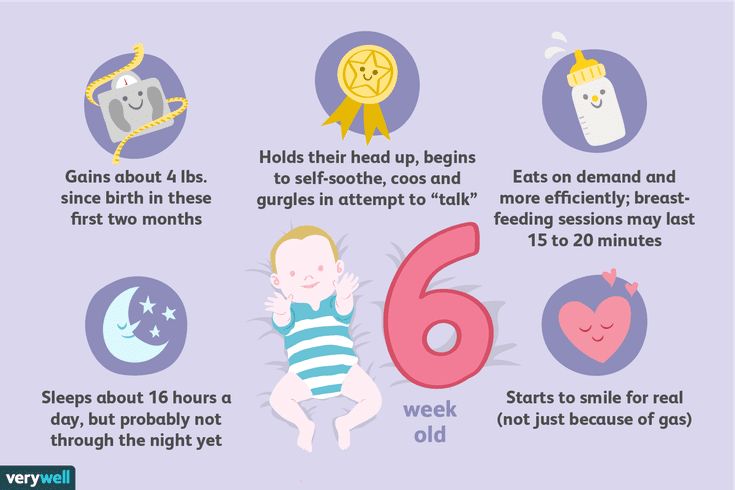
When they transition from active to passive sleep (or vice versa) if they aren’t full and are hungry, instead of just continuing the nap, they’ll become fully alert and ready to feed.
And then, because they only took a short nap, when you feed again for 5 to 10 minutes, they’ll be lulled back into a sleep.
➡️ Continuing the cycle of accidental cluster feeding and an overtired baby.
Related Reads:
- The Biggest Baby Sleep Myth That Backfires Every Time (And Makes Over Tired Babies)
- The Ultimate Guide To Baby Sleep Times (Naps & Bedtime)
How to stop the cycle and get on a good routine
The first thing you need to do is to stop baby from snacking every hour.
Encourage full feeds.
If baby is older than 6 weeks and wants to feed after one hour, consider offering a pacifier (we use these stuffed animal ones) instead.
This may help baby get back to sleep for a longer nap, and will mean the next time you feed baby will be hungry enough to eat a full feed.
Do the best you can.
Baby has been in the snacking habit and may resist the change, but eventually you’ll see that you have a far less whiny baby on your hands when they have full tummies and are well rested.
Read: 8 Reasons You’ve Got A Whiny Baby And What To Do About It
Sleep Little Lamb
Create sustainable sleep habits for your little lamb so the whole family can sleep peacefully without the stress, drama, and tears.
Learn More
How to get your newborn to nap better
After you make sure that baby has full feeds, you’ll want to work on the napping…
I encourage you to read my full post on baby sleep here – Foolproof Baby Sleep Tips — Routines, Habits & Strategies.
@amotherfarfromhome Follow for more tips like this one! #newmommas #momstrugglesbelike #tipsformom #mommingit #sahmom #parentcoach #mommingallday #newbornbabytips ♬ Sunroof – Nicky Youre & dazy
Here is how to approach napping with your baby:
- Newborns should only be awake for around 45 to 90 minutes at a time (including feeding!) so your newborn routine and your newborn sleep schedule should have a nap after every single feed.
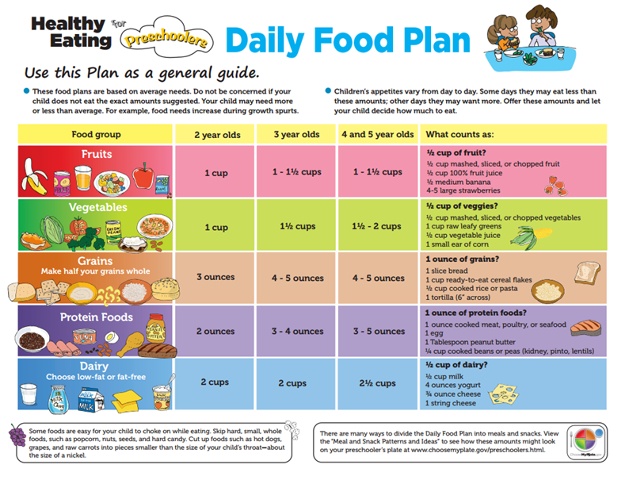
- Don’t rock baby to sleep in your arms and then try to put him in the crib because when he transitions through the sleep cycles he’ll realize he’s not in your arms… and he’ll wake up early.
Read: The Top 10 Indicators It’s Time to Sleep Train
- Establish a basic routine with your baby. You can follow this newborn routine here or modify it slightly.
- Put your baby to sleep drowsy but awake.
- Establish some wind down routines for your little one prior to nap.
- Focus on cluster feeding in the late evening hours which will help baby top up and sleep better throughout the night.
- Identify any sleep props your baby has (things that prevent him from transitioning and sleeping well on his own) and replace those with sleep associations.
28 Things To Do If Baby Won’t Sleep CHECKLIST
Here’s a handy dandy list of 28 things to try so baby will stop fighting sleep and sleep longer and later.
Recap and FAQ… How to get baby to stop feeding every hour and start sleeping
Why does my baby feed every hour?
Short answer… because you let him. Encourage baby to take full feeds and then baby won’t need to feed sooner than 2.5 or 3 hours between feeds throughout the day.
Perhaps even less at night.
Is ten minutes a full feed?
Probably not.
If baby will feed for ten minutes then nap and wake up to feed around 2.5 hours later, it might be.
My daughter fed no longer than 15 minutes per feed, but she could go 3 hours between feeds so, for her, it was a full feed.
Why does my baby want to breastfeed constantly?
If your baby wants to feed constantly, but never feeds that much, then it’s likely an association between feeding and comfort.
You can create other positive associations by cuddling, singing, rocking, baby massage, and other things that will help you to feel bonded to baby (so you can enjoy baby now!) but not be open for milk business all day.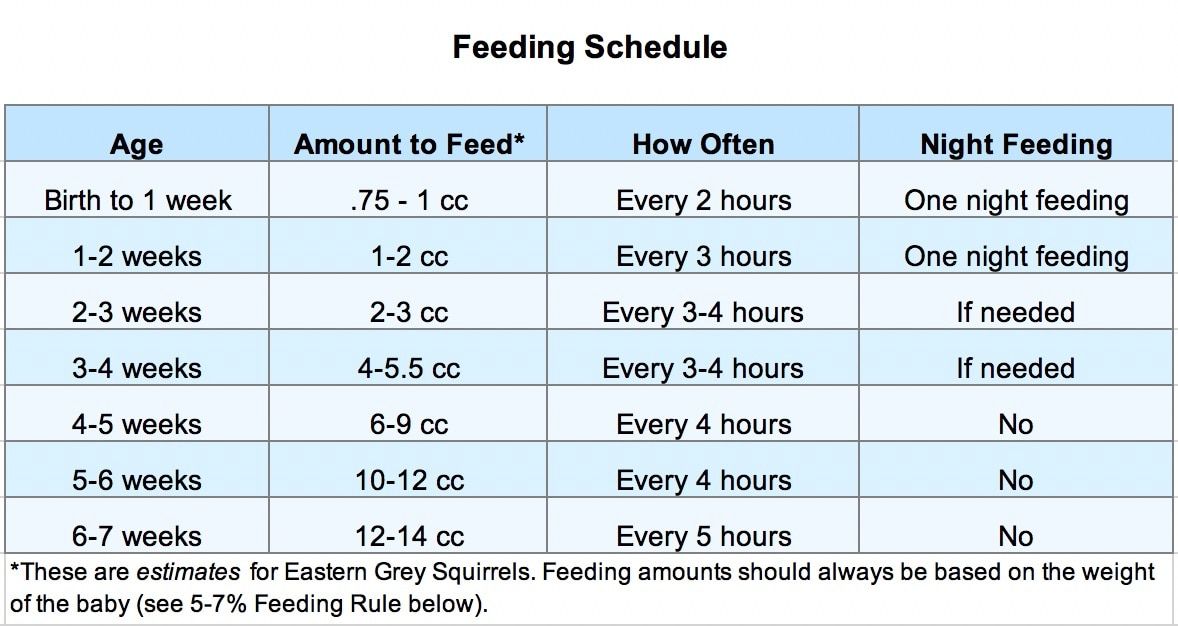
Is feeding every hour cluster feeding?
Yes and no.
Cluster feeding is generally something a breastfeeding mother does on purpose in the late afternoon early evening period (feeding every 2 hours, say) to help give baby all the nutrients he needs so he will sleep later and longer.
Feeding every hour is more like an accidental cluster feeding and if baby isn’t having full feeds then it’s more like Comfort Nursing, not cluster feeding.
About those growth spurts…
Do babies feed every hour when they are going through a growth spurt?
If your baby is going through a growth spurt they will want to feed more often.
This helps your milk supply increase. It’s how you can know if baby is getting enough milk.
If baby is feeding every hour two and taking these feeds seriously – full feeds – then it’s likely a growth spurt or milk supply issue.
Or if baby is trying to feed every hour or two and only feeding for five minutes here or there, it’s not likely a growth spurt.
Why does my baby nurse for 5 minutes and then cry?
This could be a number of things.
Baby could have reflux or you could have hyper-lactation.
Baby could have uncomfortable gas.
Or baby could have a food sensitivity to something you’ve eaten. If this persists past a few days, I’d go in to the doctor and rule out the above causes.
Newborn Feeding Chart
Use this simple printable chart to track your feeds to make sure baby is fed, your supply is up, and everyone is well.
Milk supply?
Why does my baby always seem hungry and never satisfied?
This could be your milk supply. Here’s how to know if baby is getting enough milk.
Could be that baby is going through a growth spurt which means baby is more hungry.
Baby might be teething and eating is not comfortable so he’s not feeding well and in pain. Try pain management for babies who are going through teething.
Why is my newborn feeding for hours on end?
Short answer: they don’t.
They may stay at the breast for a long time, but that doesn’t mean they are actively feeding.
If your baby will take a pacifier you’ll see that they will also suck at the pacifier while sleeping.
Encourage your baby to be awake for feeds and then, after 30 to 45 minutes, take baby off the breast and let them take a nap in their own crib.
Sources:
- The importance of schedules and routines
- Routines minimize chaos which promotes resilience and regulation
- Routines indicators of predictable family life contributing to childhood development
::
Newborn Feeding Schedules -- All You Need To Know
What's in this post...
Inside you’ll find info on a newborn feeding schedules for the breastfeeding (or formula feeding) mom and how to make it work for you.
When my first baby was born I knew I needed a good routine.
I’m a predictable person, and the fact that I had a tiny human doing all manner of things I wasn’t familiar with, made me realize a need for some order.
For me to be a calm and settled mother, I decided to breastfeed on a schedule. I’m a big believer in mothering to your strengths.
As long as the baby’s needs are being met in a nurturing and loving way, why shouldn’t a mother order her day in a way that benefits everyone?
If you prefer to go with the flow, and you find peace and relaxation that way, go for it. But even as you do so, realize this…
➡️ Some mothers don’t love routines or schedules, but babies do.
Read: Advice For New Moms Your Doctor Won’t Tell You
The research is so overwhelmingly in favor of routines for young ones, it doesn’t hurt to give it a try!
If you want to breastfeed on a schedule, don’t listen to the naysayers and loud angry voices who say it isn’t possible. It’s very possible. It’s doable. Mothers around the world do it every day.
It’s very possible. It’s doable. Mothers around the world do it every day.
Even life with a newborn can be calm and predictable when you breastfeed on a schedule. You can also use this daily log for babies to help you keep track of all the newborn feeding scheduled times and what’s going on.
Newborn Feeding Chart
Use this simple printable chart to track your feeds to make sure baby is fed, your supply is up, and everyone is well.
Must Know Info
#1 – If your baby is hungry, feed him.
Scheduling isn’t really about getting your baby to follow some arbitrary time for feeding.
It’s about feeding your baby in a way they get the calorie rich hind milk at each feeding (aka. a full feed) so they naturally go longer between feeds and don’t try to snack for 5 minutes every hour.
It’s also prevents you from constantly breastfeeding a baby 24/7 who snacks for five minutes then falls asleep for 20. I call this frequent feeds all together “cluster feeding by accident. ”
”
We can aim for a newborn feeding schedule, but this bears repeating: if baby is hungry, feed him.
When you naturally give your baby full feeds they’ll fall into a predictable routine.
However, when they are hungry, going through a growth spurt, or just generally needing to feed and they are off schedule… feed them anyway.
All 5 of my babies naturally fell into a 2.5 – 3 hour feeding schedule from birth, but on occasions when they needed more milk at various times I just fed them.
Period.
Feed the baby when she’s hungry.
Read: What To Do When Baby Is Feeding Every Hour (& Not Sleeping!)
The Biggest Thing You Should Focus On…
Full feeds.
I cannot tell you how important this is, no matter if your baby feeds at the breast or bottle. You can track baby’s feeds with this daily log, but know that the newborn feeding schedule can be flexible, but should always include full feeds.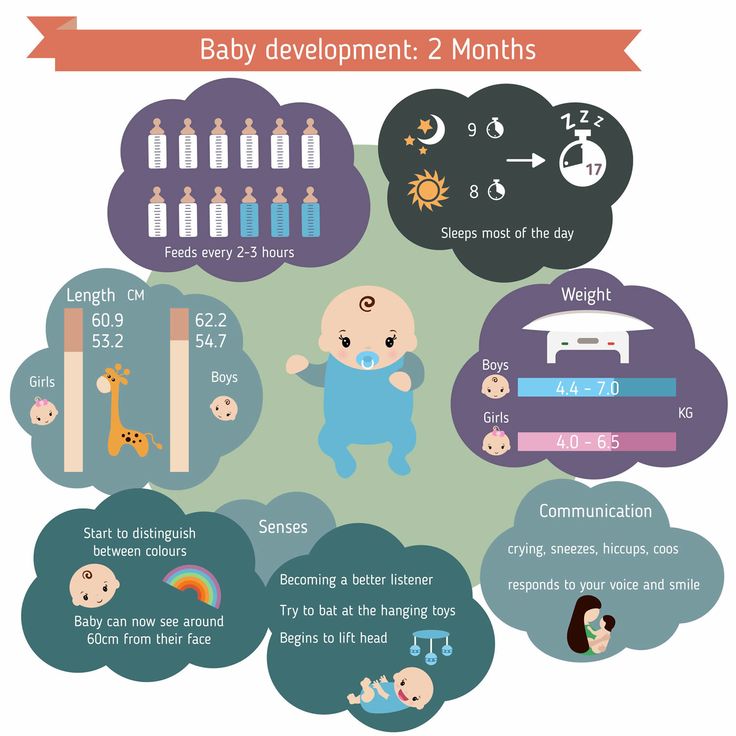
Especially if your [thrive_2step id=’9673′]baby won’t sleep.[/thrive_2step]
Watch this video below on why full feeds matter.
A general rule of thumb, feeding for at least 20 minutes usually means baby got a full feed.
Read: What to do when your baby is feeding all day every day
Newborn Feeding Chart
Use this simple printable chart to track your feeds to make sure baby is fed, your supply is up, and everyone is well.
#2 – Be flexible with your nursing times
I have nursed 5 babies on a flexible but consistent newborn routine and it has worked well each time.
Babies can easily adapt to a routine and follow it well, but there will be times – like when teeth are breaking through or time change or if they have some problems with reflux – where you need to be flexible.
Read: Cocooning a Newborn & 7 Reasons Why it Can Be Good For The Family
As the saying goes…
“Blessed are the flexible, for they don’t break when bent.
”
If you are from a certain area or country that promotes demand feeding and strongly discourages newborn schedule feeding, do some little research on your own.
Often practitioners are concerned you’ll make the clock your master instead of simply using the clock to facilitate a nice routine.
It is not child abuse, cruelty or neglect to work towards a schedule and routine, it may be the best thing you can do for everyone, especially if you cannot cope with too much unpredictability.
Newborn Settling Guide
Tried-and-true *hands on* newborn settling strategies that even the most fussy (or wide-awake-sleep-refusing) newborns cannot resist!
Learn More
Related Reads:
- Why Moms Lose Their Identity And How To Get It Back
- Enjoy Being A Mother Again With These 4 Stress Relieving Mindsets
- 5 Signs You Might Be A Depressed Mom & How To Start Feeling Better
Examples That Work
First, you’ll want to get our newborn’s morning and evening confusion sorted out. You can do that typically in less than a week.
You can do that typically in less than a week.
After you’ve done that, begin with these suggested infant feeding times.
Note: Formula fed babies can probably go longer between feeds while breastfed infants will follow the schedule below.
⭐ Sample Newborn Feeding Schedule #1
- 7:00 am – full feed
- 8:10 am – wind down routine, nap
- 9:30 am – full feed
- 10:45 am – wind down, nap
- 12:00 pm – full feed, “play time”
- 1:30 pm – wind down, down for nap
- 3:00 pm – full feed, “play time”, bath time, family time, etc.
- 4:15 pm – wind down, nap
- 5:30 pm – full feed, family time
- 7:30 pm – cluster feed, wind down, down for nap
- 9:30 pm to 10:30 pm – dream feed (swaddled), immediately back down to bed
- Night feeds throughout the night as baby wakes up
⭐ Sample Newborn Feeding Schedule #2
- 4:30 am – feed baby swaddled (no lights on)
- 7:00 am – wake up, feed unswaddled (here’s why) in well lit area, play time
- 8:15 am – wind down routine, down for nap
- 10:00 am – full feed unswaddled
- 12:45 pm – wind down routine, down for nap
- 2:45 to 3:00 pm – full feed
- 4:15 pm – down for nap
- 5:30 pm – cluster feed
- 7:30 pm – cluster feed swaddled then immediately down for nap
- 9:30 pm to 10:00 pm – feed again swaddled, put immediately down to sleep
- Feed at night as baby wakes up
#3 – Monitor supply and demand, and adjust accordingly
With all five children I’ve been able to maintain an adequate milk production until nearly their first birthday, or longer if desired.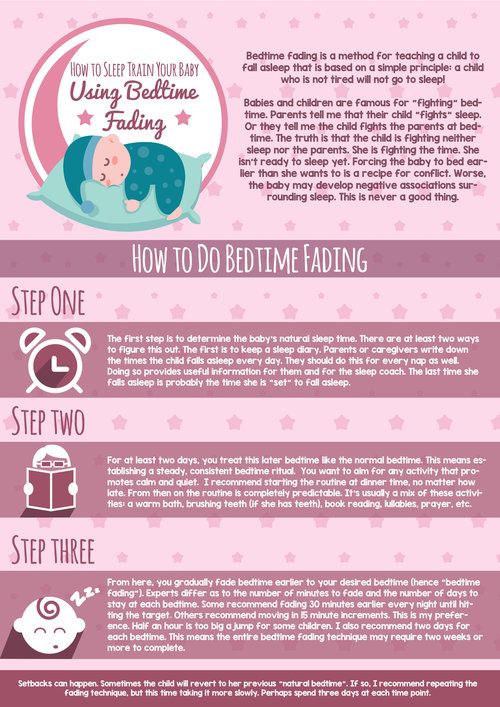
My two sons stopped breastfeeding just shy of one year because I’d become pregnant again, and the milk had changed.
But that’s another post.
My firstborn never fed for more than ten minutes at a time (and this is a full feed) and I was still able to maintain supply feeding 2.5-3 hourly and then as she slept through the night at 4 months.
This is without any extra pumping, expressing or tricks to keep up my milk supply.
Read: How To Dress A Newborn Safely In Summer (Day & Night)
It just naturally worked.
- Some mothers find their milk supply on the low side and need to more breastfeeding sessions to keep up supply.
- This may mean that scheduling is difficult for you unless you pump during the day.
- You’ll have to determine whether it’s more convenient for you to feed more frequently throughout the day (like with feedings clustered together), or if pumping and storing breast milk will be enough demand to keep up your supply.

- You’ll want to feed at minimum 8 baby feedings within 24 hours for those early weeks. See a detailed newborn routine here, a detailed newborn feeding schedule here, and a newborn sleeping schedule here.
When you drop a feed you may need to express or pump for a while to maintain your supply.
And, when babies begin sleeping through the night, much the same.
If baby is having a growth spurt, you will find your baby feeding more frequently, and this is a good thing. It means that your supply will build up to meet their need because, again, you always feed your baby when they’re hungry.
As with demand feeding, monitoring your milk supply may help you stop any issues before they progress.
Read: How To Know If Baby Is Getting Enough Milk
28 Things To Do If Baby Won’t Sleep CHECKLIST
Here’s a handy dandy list of 28 things to try so baby will stop fighting sleep and sleep longer and later.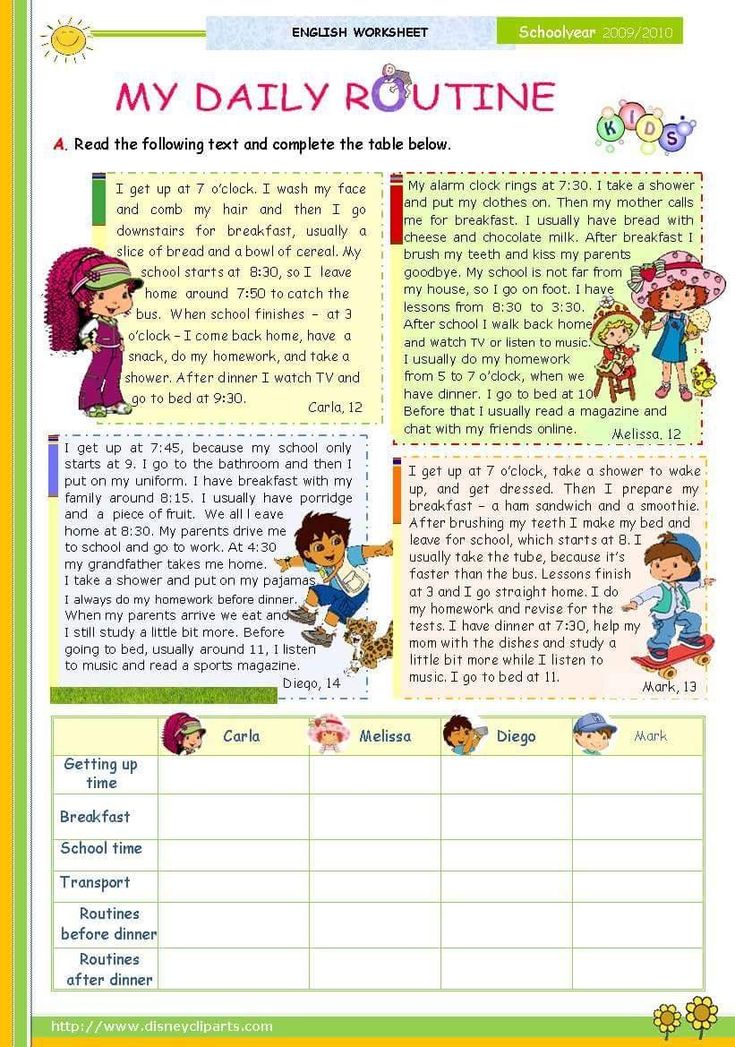
#4 – Menstruation may return earlier, depending on the individual
Okay this is partially in jest, but something worth mentioning.
I followed a newborn breastfeeding schedule and my period returned anywhere from 3 months postpartum (though I kept feeding for a year minimum) to as late as 7 months postpartum.
That’s just how my body worked.
Nursing did NOT equal birth control.
If you’ve been around here for a while, you know I love talking about the pros and cons of having babies close together.
Perhaps the reason I was able to have babies close together while breastfeeding might be due to the fact that I feed on a schedule.
Meaning, less constant stimulation may produce less milk which can trigger menstruation. Enough milk to feed baby, yes!
Enough to stave off menstruation for a whole year? Perhaps not.
It might not be true for every mother, but it is something to consider.
It depends entirely on the woman, but in my experience, menstruation resumed long before I finished breastfeeding.
#5 – It’s not “selfish” to want predictability
People’s criticism of newborn feed scheduling often revolve around two areas.
- That you’re a slave to the clock and don’t care if your baby is hungry.
- That the baby’s needs aren’t being met since you are worried about a routine instead of just meeting needs as they come.
We’ve already addressed the first concern since we agree to feed the baby when they show any sign of hunger.
Now, I’d like to wager that many mothers use routine and schedules specifically to meet the baby’s needs.
If the routine doesn’t meet their needs, well, the routine gets changed.
If you are a routine oriented person and feel more confident, comfortable and calm in this setting, I recommend working towards a schedule.
Ultimately, the mother is in charge of everyone’s well-being and if she is going against her own natural rhythms there will be depression, stress, and even anger.
You must live within your own limits and boundaries.
Babies adapt well to the rhythm the mother sets, and as long as the baby is well-fed, well-rested and content, then you are on the right track.
➡️ A mother should feel free parent to her strengths so long as the baby’s needs are met in a nurturing and loving environment.
Benefits of feeding baby on a schedule
PredictabilityPart of why the adjustment to parenting is so difficult is the complete life change a mother goes through.
Wonderful? Of course.
Challenging? Yes.
With a newborn on a schedule your days are still, for the most part, predictable. You know when you’ll have time to cook dinner, have visitors, or take a nap.
Some days have their challenges, but for the most part you can rest easy knowing what the day will hold.
Read: How To Run Errands With Baby And Not Regret It
Easier to manage all children’s needsHaving had no experience in this area, I honestly don’t know how mothers of multiple children who demand feed newborns get through the day.
I would probably have a nervous breakdown on day 8. If you aren’t a go with the flow type of mother, you likely couldn’t handle it either.
When you have a schedule and routine you’re able to determine how you can meet everyone’s needs in a timely way.
The baby can be fed during playtime, naps, or outside time.
The family dynamic will certainly change, but having a routine means the baby isn’t the only one whose needs are met while everyone else just waits.
Read: A Sample Joint Daily Routine For Baby, Toddler, And Preschooler
Newborn finds their place within the family instead of the family being completely baby centeredInevitably life changes when a new baby enters the home.
And what a great change it is!
A new sibling to cuddle, a new baby to love, and a host of new needs to be met.
I believe it’s comforting to everyone when a newborn can come home to an orderly, peaceful, and well-run home.
Of course some days are bonkers and sometimes we lose it, but on the whole, a schedule allows for the family to continue running as a whole even with a newborn.
The mother meets the physical needs of the newborn and the older children while still maintaining order in the home. Everything doesn’t become all about the baby to the detriment of other family members.
The baby simply enters into the family who patiently waited for its arrival.
Read: How to teach your little one to sleep well as early as possible
You’re able to schedule errands around feeding easilyThe best way to develop good sleep habits with your baby is to let them sleep.
Without a schedule they are constantly in the stroller, car seat, or carrier being carted from one place to another.
This works fine for a few months until they are about 4 months old (and have a sleep regression) or 5 months old and they are gearing for solids. They start becoming more aware and then, if you haven’t done the hard work of sleep training up front, you’ll have a baby who doesn’t want to sleep.
They start becoming more aware and then, if you haven’t done the hard work of sleep training up front, you’ll have a baby who doesn’t want to sleep.
By having a schedule and a routine you can organize your play dates, appointments, visitors and errands loosely around the baby’s daily routine and schedule.
Again, baby’s needs are being met while things are getting done at inconvenience to no one.
Read: The Real Reason Moms Never Have Enough Time (Hint: It’s Not Because They Waste It!)
Routine helps everyone settle into the new norm.The first few months postpartum can be a challenge for the entire family.
Children are learning new roles and adjusting as well as the parents.
Developing a new routine and schedule that benefits all will help everyone settle into the new norm. Because routines bring security and boundaries to children, they crave them.
When a major (and exciting) life change, like a new baby, occurs settling into a new routine is one of the best ways to help the dust settle.
Read: How to get through the mentally trying newborn weeks
Daily Routine Brainstorm SHEETS
Get my cheat sheets (newborn up to elementary aged kids) and find your family’s groove.
Use them for:
- nap times
- meal times
- bedtimes
- chore times
- play times
- AND more!
I cannot stress strongly enough (oh if you could hear my real voice which gets very loud when I stress things enough) how important it is to parent how you were made.
If you love routine then I can’t see why you’d parent any other way.
Children get a sense of security from routines (source) naturally so if you feel calmer in a routine environment, the entire house will run more smoothly.
Stress, depression, and weariness are bi-products of functioning too long in environments we aren’t suited for, so don’t make your home one of those.
Basic Baby Sleep Times
Here are some basic baby sleep times. These will vary by baby, but it’s important to look at these and realize that babies sleep more than you think.
- Newborn to 2 months: 16-18 hours a day | 7 to 9 naps (one after each feed)
- 2-4 months: 15-17 hours a day | 4 to 5 naps (after each daytime feed)
- 4-6 months: 14-16 hours a day | 4 naps or so (probably dropping the last nap before bedtime)
- 6-9 months: 14-16 hours a day | 3 to 4 naps a day (eventually getting down to 2 naps a day)
- 9 – 12 months: 14-16 hours a day | 2 to 3 naps (eventually getting down to 2)
- 12-18 months: 14-15 hours a day | 2 naps a day (eventually getting down to 1 nap a day)
Handy tips for these early weeks
- Get on a good sleep routine
- Learn the signs of hunger for your baby, and use your routine to anticipate baby’s needs before he needs to cry.

- Set the foundation in the first days after birth by following these strategies.
- Remember that babies go through growth spurts at age 6 weeks of age and again at 3 months, so you will have to feed more (cluster feeding (feeding a few times close in time) works!) to increase your milk supply to get them through.
- A breastfed baby can also learn to take a bottle on and off, which will help if you have to run errands or need to be away on occasion.
- Your milk supply will ebb and flow throughout the day and is often at its lowest quality by late afternoon early evening, so cluster feedings will help this.
- Pay attention to the signs that your baby is over tired.
- The exact feeding time is not nearly as important as feeding on a routine or schedule. As in, every 3 hours is more important than feeding every day at 7:30 a.m. Both work well together, but if you hate working to a clock, aim for full feeds at set intervals.

- Note that many newborns will feed from 30 minutes up to even 45 minutes. I had one son who would feed for nearly an hour! Less than 15 minutes and that’s considered snacking, so aim for full feeds.
FAQ
Let’s dive in.
“How often do you feed a newborn at night?”
As often as they wake up hungry. Before you go to bed, give a feed right before you go to sleep then lie down to sleep. Sleep until baby wakes up ready to eat.
“How many days after birth do I start on a routine or schedule?”
I like to start Day One. Your routine will mainly consist of full feeds, snuggling/cuddling, then putting baby down for a nap, but this is the foundation for all sleeping schedules to come.
“How do I keep my newborn awake during feeds?”
Unswaddle them, first of all. Then you can rub their cheeks, the bottom of their feet, and even use a wet wipe to keep them alert during feedings.
“Do I always need to nurse on both sides during each feeding?”
No. If you have a baby who wants to feed for one hour, you’ll likely end up nursing from both breasts. If you have a baby who has a “strong suck” (a fun term from my midwife) then you may end up only nursing from one side.
It’ll depend on your baby, your milk supply, and whether or not baby is truly getting full feeds.
My newborn is sleeping through feedings, what should I do?
So this can easily happen, these precious babies are so comforted by both your physical touch and the breastmilk, that they happily drift off.
This can also, if it happens throughout the day, contribute to significant daytime and nighttime confusion. Baby will sleep through feeds all day, then want to be up feeding or playing all night.
Sources:
- The importance of schedules and routines
- Routines minimize chaos which promotes resilience and regulation
- Routines indicators of predictable family life contributing to childhood development
Family Routines Reboot
Take our 3 day challenge to create life-giving family, child, and self-care routines.
Learn More
::
The child should not | Medical Center
At the moment, services are being re-evaluated, please check with the administrator by phone for details and exact prices. Thanks for understanding!
Medical Center
8(495)741-10-01
Alekseevskaya metro station, Prospekt Mira, 102, building 23
Paveletskaya metro station, 3rd Monetchikovsky pereulok, 16, building 1
daily
08:00 - 20:00
Personal account
Show on map
Pediatrician Anastasia Turchinskaya as a lawyer for babies.
The child should NOT:
- sleep through the night. Night feedings are an important part of the diet. It is absolutely normal that the baby asks for food at night every three, two, or even half an hour. Attach the baby to the breast, especially since more prolactin and oxytocin are produced at night - hormones that provide breastfeeding.

- to be in the crib, not in the arms. Wanting to be held is a normal desire of a child! The instinct that allowed mankind to survive. And although we now do not live in caves and there are no saber-toothed tigers around us, the need to be in the hands of an adult is still basic! So the child is calm, and, therefore, can explore the world, grow and develop. nine0026
- is on schedule. The best diet for babies - on demand. The volume of the stomach of the newborn is small. It is normal that the child asks for food every 2 hours, even every half an hour! Breastfeed your baby every time he wants to.
- poop once a day with yellow poop. The child's stool for breastfeeding can be either every time after feeding, or once every few days. Stool color is not permanent and changing from yellow to brown to green is normal! The main guideline is weight gain and good health. nine0026
- be convenient. Children of the first year of life are very demanding.
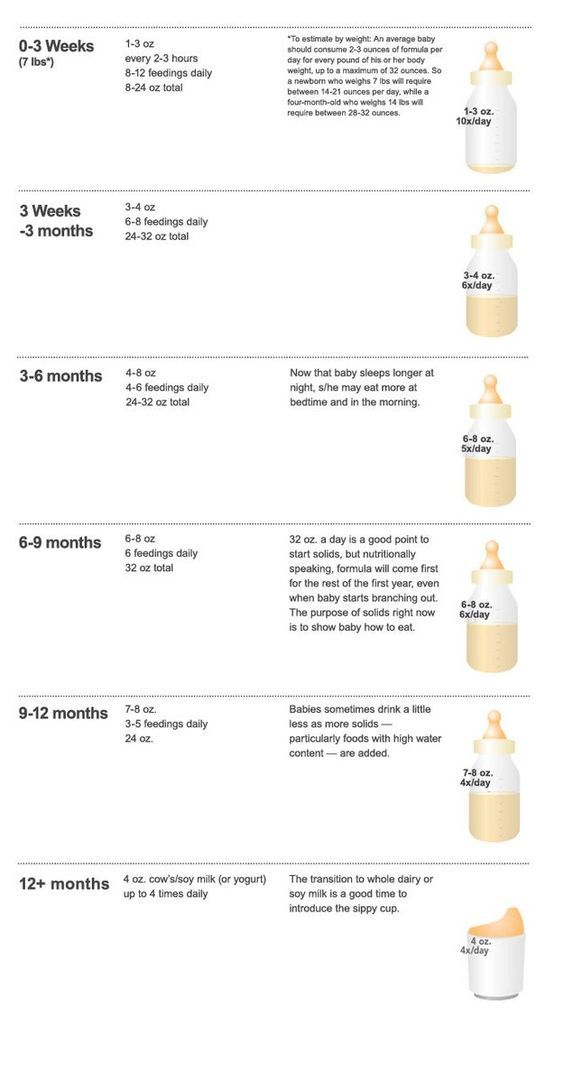 They need parents around the clock. Postpone all things to an older age, devote your attention and time to the child.
They need parents around the clock. Postpone all things to an older age, devote your attention and time to the child. - always be healthy. Snot, cough, diarrhea, fever and other manifestations of SARS not only can, but should be in all children! When sick, the child builds up his immunity. Yes, the disease is scary and unpleasant, but it's normal!
- don't cry. In the first months, the only way a child communicates with the world is crying. Soon you will learn to recognize by "intonation" what exactly the baby wants, but for now, take him in your arms and attach him to your chest. nine0026
- be predictable. Each child grows and develops according to his own norms, rarely when they coincide with tables and textbooks.
We agree that it is difficult for young parents to notice a developmental disorder. Therefore, our pediatricians are always in touch and ready to help with professional advice!
Author:
Turchinskaya Anastasia
Below are the appointment days and hours of the specialist. After you leave a request, we will contact you to clarify the record. nine0003
After you leave a request, we will contact you to clarify the record. nine0003
time8:008:309:009:3010:0010:3011:0011:3012:0012:3013:0013:3014:0014:3015:0015:3016:0016:3017:0017:3018:0018:3019:0019: 30
I agree to the processing of personal data *
Breastfeeding in the first month: what to expect
Not sure how to establish lactation and increase milk production? If you need help, support, or just want to know what to expect, read our first month breastfeeding advice
Share this information nine0003
The first few weeks of breastfeeding are stressful. If at times you feel like you can't handle it, know that you are not alone. Feeding your baby all day long is completely natural and helps produce breast milk, but can be quite tiring at times. Be patient, think about yourself and remember: after the first month, when milk production stabilizes, it will become easier.
How often should a baby be breastfed?
Babies are born with a small stomach that grows rapidly as milk production increases: in the first week it is no larger than an apricot, and after two weeks it is already the size of a large hen's egg. nine0095 1.2 Let the child eat as much as he wants and when he wants. This will help him quickly regain the weight lost after birth and grow and develop further.
nine0095 1.2 Let the child eat as much as he wants and when he wants. This will help him quickly regain the weight lost after birth and grow and develop further.
“Be prepared to feed every two to three hours throughout the day. At night, the intervals between feedings can be longer: three to four or even five hours, says Cathy Garbin, a recognized international expert on breastfeeding. Some eat quickly and are satiated in 15 minutes, while others take an entire hour to feed. Do not compare your breastfeeding regimen with that of other mothers - it is very likely that there will be nothing in common between them. nine0003
At each feed, give your baby a full meal from one breast and then offer a second one, but don't worry if the baby doesn't take it. When the baby is full, he lets go of his chest and at the same time looks relaxed and satisfied - so much so that he can immediately fall asleep. The next time you feed, start on the other breast. You can monitor the order of the mammary glands during feeding using a special application.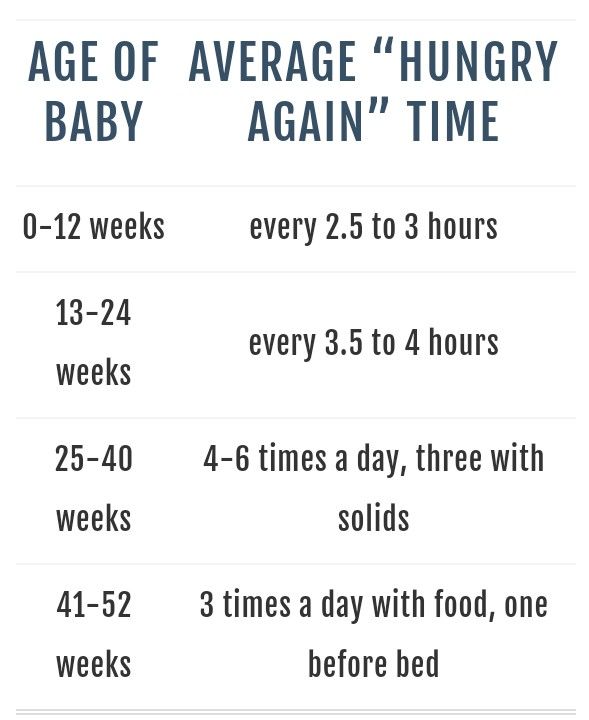
Why does the child always ask for a breast?
The first month is usually the hardest time to breastfeed. But do not think that because the baby is constantly hungry and asks for a breast almost every 45 minutes, then you do not have enough milk. nine0003
In the first month, the baby needs to eat frequently to start and stimulate the mother's milk production. It lays the foundation for a stable milk supply in the future. 3
In addition, we must not forget that the child needs almost constant contact with the mother. The bright light and noise of the surrounding world at first frighten the baby, and only by clinging to his mother, he can calm down.
Sarah, mother of three from the UK, confirms: “Crying is not always a sign of hunger. Sometimes my kids just wanted me to be around and begged for breasts to calm them down. Use a sling. Place the cradle next to the bed. Don't look at the clock. Take advantage of every opportunity to relax. Forget about cleaning. Let those around you take care of you. And not three days, but six weeks at least! Hug your baby, enjoy the comfort - and trust your body." nine0003
Let those around you take care of you. And not three days, but six weeks at least! Hug your baby, enjoy the comfort - and trust your body." nine0003
Do I need to feed my baby on a schedule?
Your baby is still too young for a strict daily routine, so
forget about breastfeeding schedules and focus on his needs.
“Volumes have been written about how to feed a baby on a schedule, but babies don't read or understand books,” Cathy says. - All children are different. Some people can eat on a schedule, but most can't. Most often, over time, the child develops his own schedule.
Some mothers report that their babies are fine with scheduled feedings, but they are probably just the few babies who would eat every four hours anyway. Adults rarely eat and drink the same foods at the same time of day - so why do we expect this from toddlers?
Offer your baby the breast at the first sign of hunger. Crying is already the last stage, so be attentive to early signs: the baby licks his lips, opens his mouth, sucks his fist, turns his head with his mouth open - looking for the breast. nine0095 4
nine0095 4
What is a “milk flush”?
At the beginning of each feed, a hungry baby actively suckles the nipple,
thereby stimulating the milk flow reflex - the movement of milk through the milk ducts. 5
“Nipple stimulation triggers the release of the hormone oxytocin,” Cathy explains. “Oxytocin is distributed throughout the body and causes the muscles around the milk-producing glands to contract and the milk ducts to dilate. This stimulates the flow of milk. nine0003
If the flushing reflex fails, milk will not come out. This is a hormonal response, and under stress it may not work at all or work poorly. Therefore, it is so important that you feel comfortable and calm when feeding.
“Studies show that each mother has a different rhythm of hot flashes during one feed,” Kathy continues, “Oxytocin is a short-acting hormone, it breaks down in just 30-40 seconds after formation. Milk begins to flow, the baby eats, the effect of oxytocin ends, but then a new rush of milk occurs, the baby continues to suckle the breast, and this process is repeated cyclically.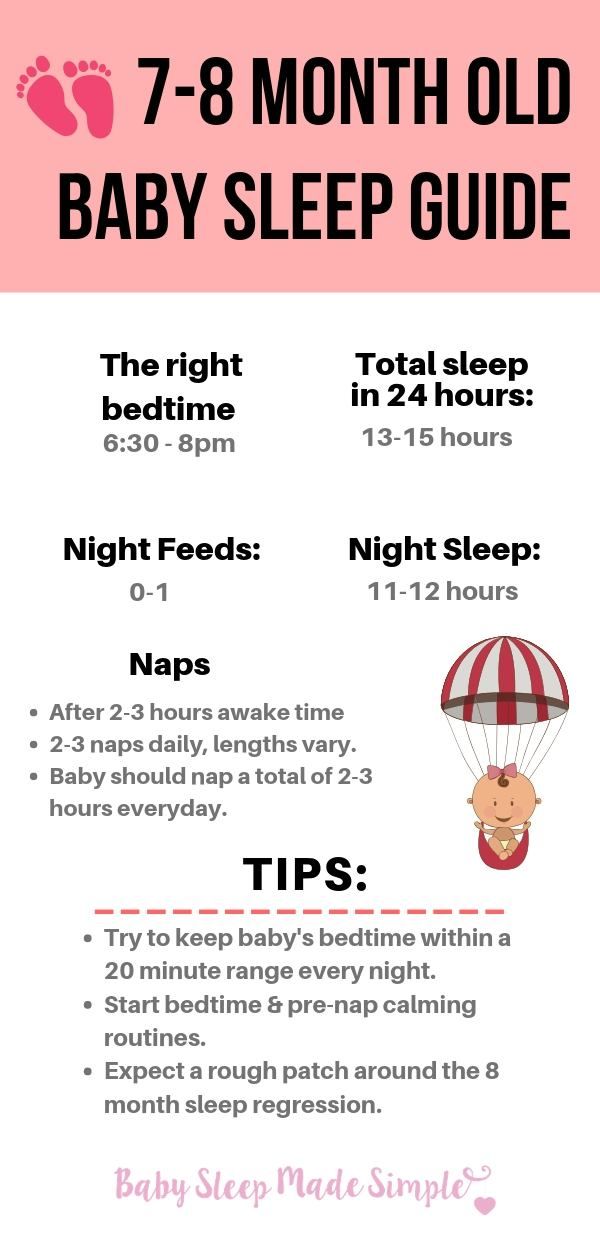 That is why, during feeding, the child periodically stops and rests - this is how nature intended. nine0003
That is why, during feeding, the child periodically stops and rests - this is how nature intended. nine0003
The flow of milk may be accompanied by a strong sensation of movement or tingling in the chest, although 21% of mothers, according to surveys, do not feel anything at all. 5 Cathy explains: “Many women only feel the first rush of milk. If you do not feel hot flashes, do not worry: since the child eats normally, most likely, you simply do not understand that they are.
How do you know if a baby is getting enough milk?
Since it is impossible to track how much milk a baby eats while breastfeeding, mothers sometimes worry that the baby is malnourished. Trust your child and your body. nine0003
After a rush of milk, the baby usually begins to suckle more slowly. Some mothers clearly hear how the baby swallows, others do not notice it. But one way or another, the child himself will show when he is full - just watch carefully. Many babies make two or three approaches to the breast at one feeding. 6
6
“When a child has had enough, it is noticeable almost immediately: a kind of “milk intoxication” sets in. The baby is relaxed and makes it clear with his whole body that he is completely full, says Katie, “Diapers are another great way to assess whether the baby is getting enough milk. During this period, a breastfed baby should have at least five wet diapers a day and at least two portions of soft yellow stool, and often more.” nine0003
From one month until weaning at six months of age, a baby's stool (if exclusively breastfed) should look the same every day: yellow, grainy, loose, and watery.
When is the child's birth weight restored?
Most newborns lose weight in the first few days of life. This is normal and should not be cause for concern. As a rule, weight is reduced by 5-7%, although some may lose up to 10%. One way or another, by 10–14 days, almost all newborns regain their birth weight. In the first three to four months, the minimum expected weight gain is an average of 150 grams per week. But one week the child may gain weight faster, and the next slower, so it is necessary that the attending physician monitor the health and growth of the baby constantly. nine0095 7.8
But one week the child may gain weight faster, and the next slower, so it is necessary that the attending physician monitor the health and growth of the baby constantly. nine0095 7.8
At the slightest doubt or signs of dehydration, such as
dark urine, no stool for more than 24 hours, retraction of the fontanel (soft spot on the head), yellowing of the skin, drowsiness, lethargy, lack of appetite (ability to four to six hours without feeding), you should immediately consult a doctor. 7
What is “cluster feeding”?
When a baby asks for a breast very often for several hours, this is called cluster feeding. nine0095 6 The peak often occurs in the evening between 18:00 and 22:00, just when many babies are especially restless and need close contact with their mother. Most often, mothers complain about this in the period from two to nine weeks after childbirth. This is perfectly normal and common behavior as long as the baby is otherwise healthy, eating well, gaining weight normally, and appears content throughout the day.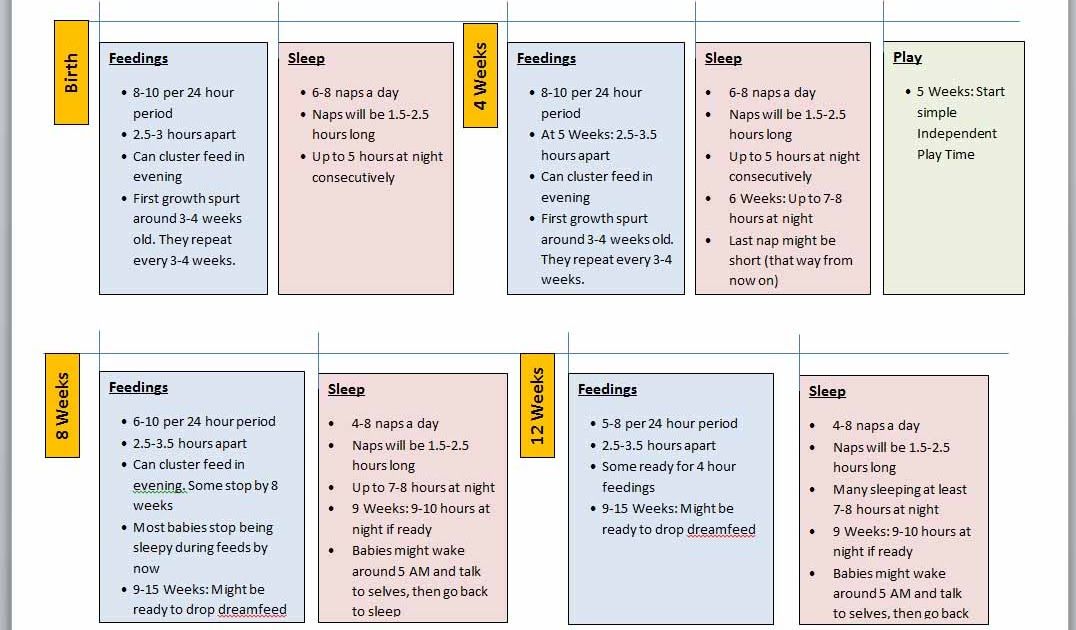 9
9
Cluster feeding can be caused by a sharp jump in the development of the body - during this period the baby especially needs love, comfort and a sense of security. The growing brain of a child is so excited that it can be difficult for him to turn off, or it just scares the baby. nine0095 9 If a child is overworked, it is often difficult for him or her to calm down on his own and the help of adults is needed. And breastfeeding is the best way to calm the baby, because breast milk is not only food, but also pain reliever and a source of happiness hormones. 10
“No one told me about cluster feeding, so for the first 10 days I just went crazy with worry - I was sure that my milk was not enough for the baby,” recalls Camilla, a mother from Australia, “It was a very difficult period . I was advised to pump and supplement until I finally contacted the Australian Breastfeeding Association. There they explained to me what was happening: it turned out that it was not about milk at all. nine0003
nine0003
Remember, this is temporary. Try to prepare dinner for yourself in the afternoon, when the baby is fast asleep, so that in the evening, when he begins to often breastfeed, you have the opportunity to quickly warm up the food and have a snack. If you are not alone, arrange to carry and rock the baby in turns so that you have the opportunity to rest. If you have no one to turn to for help and you feel that your strength is leaving you, put the baby in the crib and rest for a few minutes, and then pick it up again. nine0003
Ask your partner, family and friends to help you with household chores, cooking and caring for older children if you have any. If possible, hire an au pair. Get as much rest as possible, eat well and drink plenty of water.
“My daughter slept a lot during the day, but from 23:00 to 5:00 the cluster feeding period began, which was very tiring,” recalls Jenal, a mother from the USA, “My husband tried his best to make life easier for me — he washed, cleaned, cooked, changed diapers, let me sleep at every opportunity and never tired of assuring me that we were doing well.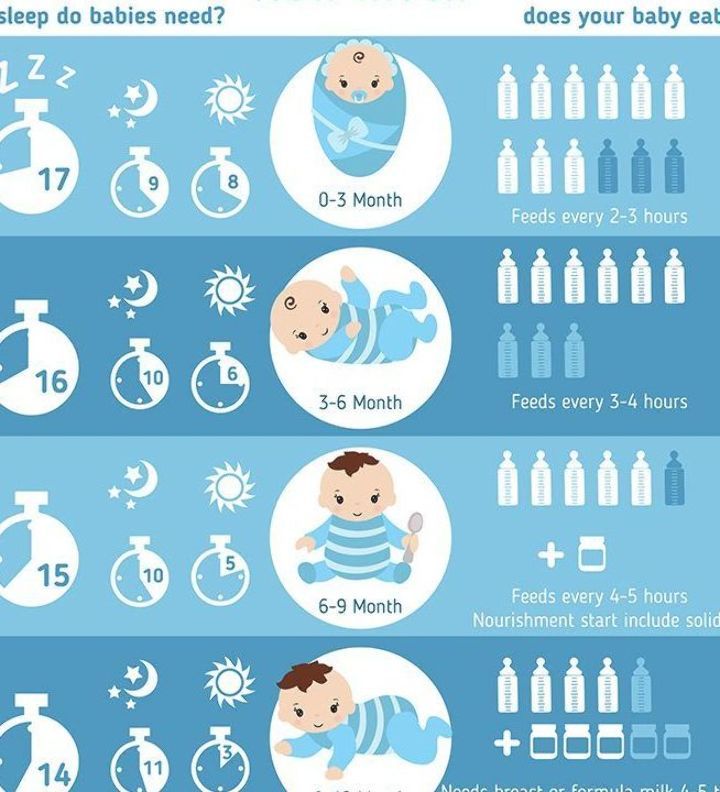 ” nine0003
” nine0003
If you are concerned about the frequency of breastfeeding, it is worth contacting a specialist. “Check with a lactation consultant or doctor to see if this is indicative of any problems,” recommends Cathy. “Resist the temptation to supplement your baby with formula (unless recommended by your doctor) until you find the cause. It may not be a matter of limited milk production at all - it may be that the child is inefficiently sucking it.
When will breastfeeding become easier?
This early stage is very special and does not last long. Although sometimes it seems that there will be no end to it, rest assured: it will get easier soon! By the end of the first month, breast milk production will stabilize, and the baby will become stronger and learn to suckle better. 2.3 Any problems with latch on by this time will most likely be resolved and the body will be able to produce milk more efficiently so inflammation and leakage of milk will start to subside. nine0003
nine0003
“The first four to six weeks are the hardest, but then things start to get better,” Cathy assures. It just needs to be experienced!”
The longer breastfeeding continues, the more benefits it brings, from saving on formula and improving sleep quality 11–13 to boosting your baby's immune system 14 and reducing your risk of developing certain types of cancer. nine0095 15
“When you feel like you're pushing yourself, try to go from feed to feed and day to day,” advises Hannah, a UK mom. “I was sure I wouldn’t make it to eight weeks. And now I have been breastfeeding for almost 17 weeks, and I dare say it is very easy.”
Read the resource Breastfeeding After the First Month: What to Expect
Readings
1 Naveed M et al. An autopsy study of relationship between perinatal stomach capacity and birth weight. Indian J Gastroenterol .1992;11(4):156-158.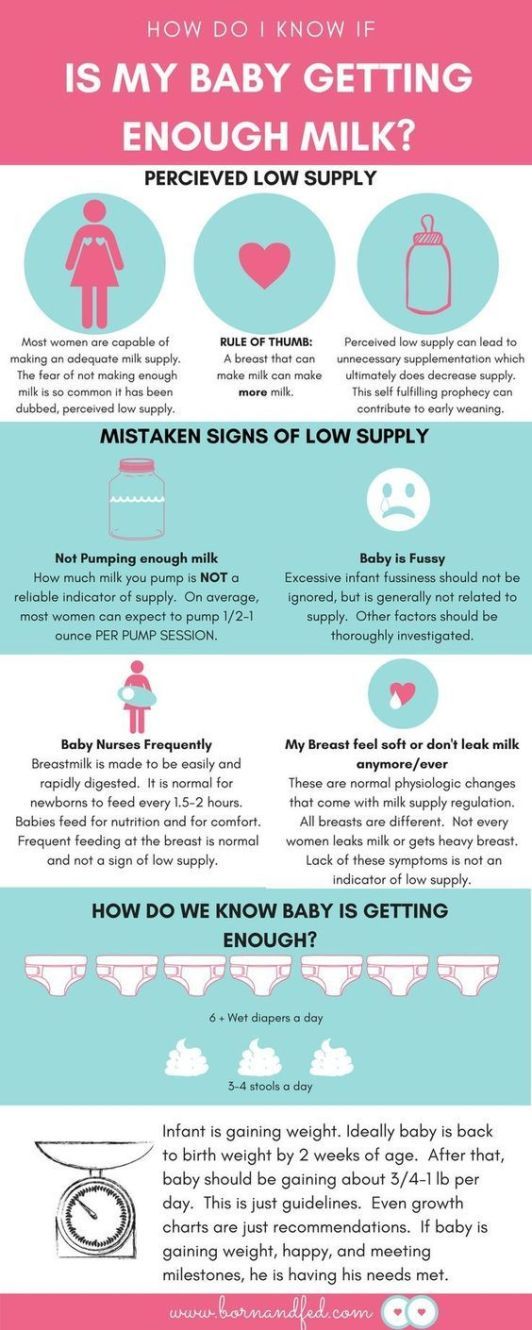 - Navid M. et al., "Relationship between prenatal gastric volume and birth weight. Autopsy." Indian J Gastroenterol. 1992;11(4):156-158.
- Navid M. et al., "Relationship between prenatal gastric volume and birth weight. Autopsy." Indian J Gastroenterol. 1992;11(4):156-158.
2 Neville MC et al. Studies in human lactation: milk volumes in lactating women during the onset of lactation and full lactation. Am J Clinl Nutr 1988;48(6):1375-1386. - Neville M.S. et al., "Female Lactation Study: Milk Quantity in Lactating Women at the Beginning and Peak of Lactation." Am F Clean Nutr. 1988;48(6):1375-1386.
3 Kent JC et al. Principles for maintaining or increasing breast milk production. J Obstet , Gynecol , & Neonatal Nurs . 2012;41(1):114-121. - Kent J.S. et al., "Principles for Maintaining and Increasing Milk Production". J Obstet Ginecol Neoneutal Nurs. 2012;41(1):114-121.
4 Australian Breastfeeding Feeding cues ; 2017 Sep [ cited 2018 Feb ]. - Australian Breastfeeding Association [Internet], Feed Ready Signals; September 2017 [cited February 2018]
5 Kent JC et al. Response of breasts to different stimulation patterns of an electric breast pump. J Human Lact . 2003;19(2):179-186. - Kent J.S. et al., Breast Response to Different Types of Electric Breast Pump Stimulation. J Human Lact (Journal of the International Association of Lactation Consultants). 2003;19(2):179-186.
6) Kent JC et al . Volume and frequency of breastfeedings and fat content of breast milk throughout the day. Pediatrics. 2006;117(3): e 387-395. — Kent J.S. et al., "Amount and frequency of breastfeeding and fat content of breast milk during the day." Pediatrix (Pediatrics). 2006;117(3):e387-95.
Pediatrics. 2006;117(3): e 387-395. — Kent J.S. et al., "Amount and frequency of breastfeeding and fat content of breast milk during the day." Pediatrix (Pediatrics). 2006;117(3):e387-95.
7 Lawrence RA, Lawrence RM. Breastfeeding: A guide for the medical profession. 7th ed. Maryland Heights MO, USA: Elsevier Mosby; 2010. 1128 p . - Lawrence R.A., Lawrence R.M., "Breastfeeding: A guide for healthcare professionals." Seventh edition. Publisher Maryland Heights , Missouri, USA: Elsevier Mosby; 2010. P. 1128.
8 World Health Organization. [Internet]. Child growth standards; 2018 [cited 2018 Feb] - World Health Organization. [Internet]. Child Growth Standards 2018 [cited February 2018].
9 Australian Breast feeding Association . [ Internet ]. Cluster feeding and fussing babies ; Dec 2017 [ cited 2018 Feb ] - Australian Breastfeeding Association [Internet], "Cluster feeding and screaming babies"; December 2017 [cited February 2018].
[ Internet ]. Cluster feeding and fussing babies ; Dec 2017 [ cited 2018 Feb ] - Australian Breastfeeding Association [Internet], "Cluster feeding and screaming babies"; December 2017 [cited February 2018].
10 Moberg KU, Prime DK. Oxytocin effects in mothers and infants during breastfeeding. Infant . 2013;9(6):201-206.- Moberg K, Prime DK, "Oxytocin effects on mother and child during breastfeeding". Infant. 2013;9(6):201-206.
11 U.S. Department of Health & Human Services [Internet]. Surgeon General Breastfeeding factsheet; 2011 Jan 20 [cited 2017 Feb] - Department of Health and Human Services [Internet], "Breastfeeding Facts from the Chief Medical Officer", Jan 20, 2011 [cited Feb 2017]
12 Kendall-Tackett K et al. The effect of feeding method on sleep duration, maternal well-being, and postpartum depression. clinical lactation. 2011;1;2(2):22-26. - Kendall-Tuckett, K. et al., "Influence of feeding pattern on sleep duration, maternal well-being and the development of postpartum depression." Clinical Lactation. 2011;2(2):22-26.
clinical lactation. 2011;1;2(2):22-26. - Kendall-Tuckett, K. et al., "Influence of feeding pattern on sleep duration, maternal well-being and the development of postpartum depression." Clinical Lactation. 2011;2(2):22-26.
13 Brown A, Harries V. Infant sleep and night feeding patterns during later infancy: Association with breastfeeding frequency, daytime complementary food intake, and infant weight. Breast Med . 2015;10(5):246-252. - Brown A., Harris W., "Night feedings and infant sleep in the first year of life and their association with feeding frequency, daytime supplementation, and infant weight." Brest Med (Breastfeeding Medicine). 2015;10(5):246-252.
14 Hassiotou F et al. Maternal and infant infections stimulate a rapid leukocyte response in breastmilk. Clin Transl immunology. 2013;2(4). - Hassiot F. et al., "Infectious diseases of the mother and child stimulate a rapid leukocyte reaction in breast milk.

